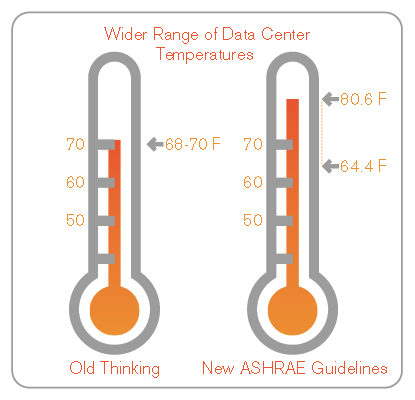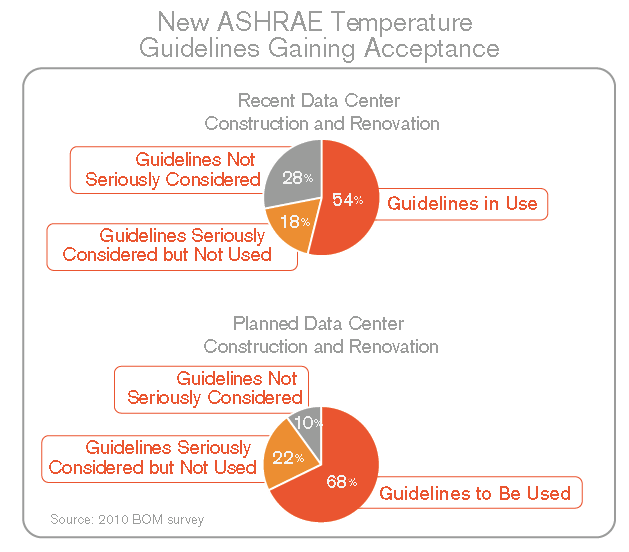Minimizing the Risk of Higher Data Center Temperatures
One way to attenuate resistance, says Mihm, is to have a backup system to exhaust high temperature air out of the space. Most environments could withstand a short period of hot temperature until the back-up system kicked in, he says, so that the data center would not be in the danger zone for an extended period of time.
One option is thermal energy storage using tanks of cold water. In water-cooled systems, the tank could be used to pump cold water through the system very quickly when a facility switches to emergency power. "The pumps come on line very quickly to restore flow and cooling back to the facility, whereas refrigeration systems can take upward of 20 minutes to restore cooling capacity," Mihm says. "But you need extra real estate to install the tank or multiple tanks."
Along with enterprise data centers, legacy data centers are more conservative about raising temperatures, and those in charge may need more education about what their equipment can withstand. "The easiest thing is to talk to the operators," says McEnteggart, "and start them on an incremental program to adjust the temperatures up from 70, to 71, to 72, and so forth, until you start seeing if part of your data center gets out of tolerance. Then you dial it back a degree or two." Because air distribution is variable, those in charge of older data centers need to watch hot areas to see where temperatures may be getting out of recommended range. Alternatively, they can hire an engineer to create a computational fluid dynamic (CFD) model, but that will cost a lot more money.
While the type of data center will, in large part, determine tolerance of the new ASHRAE standards, geography also plays a role. "An extremely hot climate that demands large amounts of cooling will likely have a lower threshold for operating a data center at a higher temperature," Voss says. In the event that the data center needs to be rapidly cooled off, the outside air will not be much help, so there is less of a margin of error.
Raising temperatures in data centers can also come up against the issue of human comfort. Technicians still have to bring in new servers or re-locate old ones, says Voss, and exhaust on the hot aisle can push temperatures up to 100 F, and it can even get to 115 F if the data center is running at a higher temperature.


Related Topics:
















